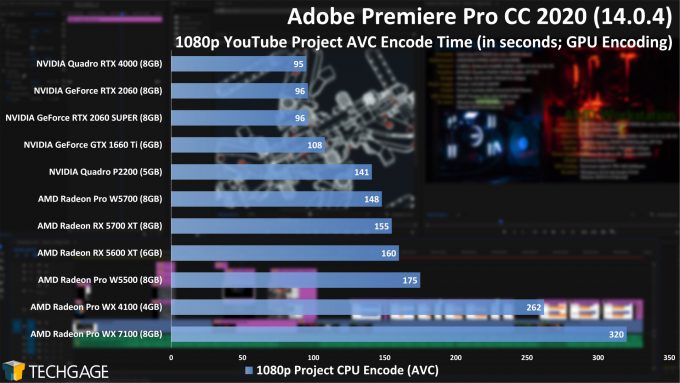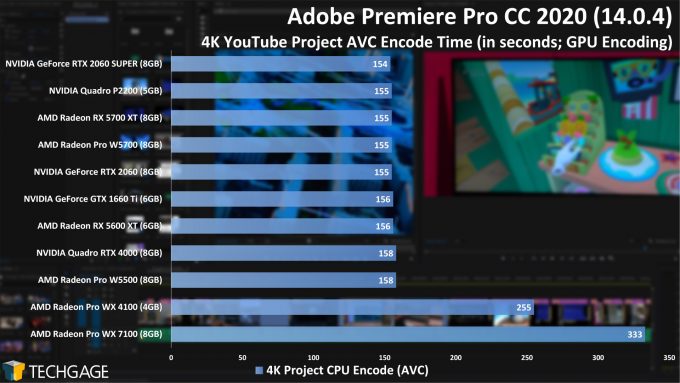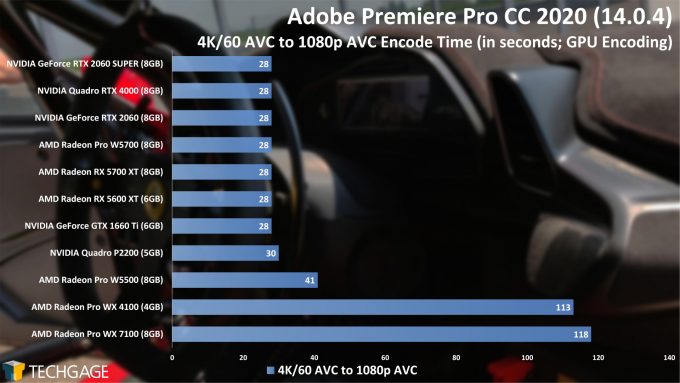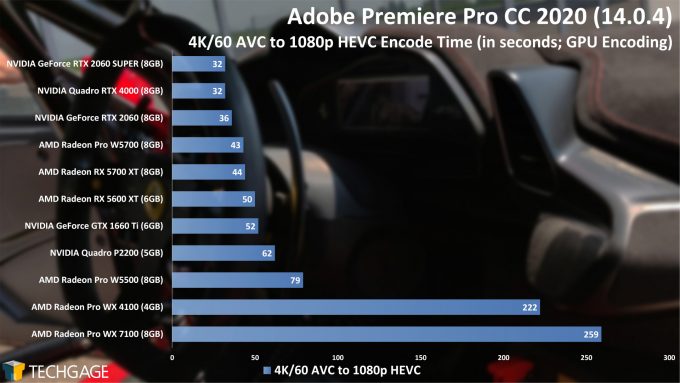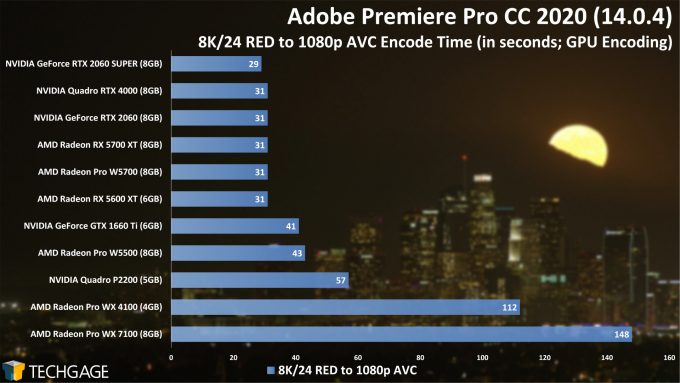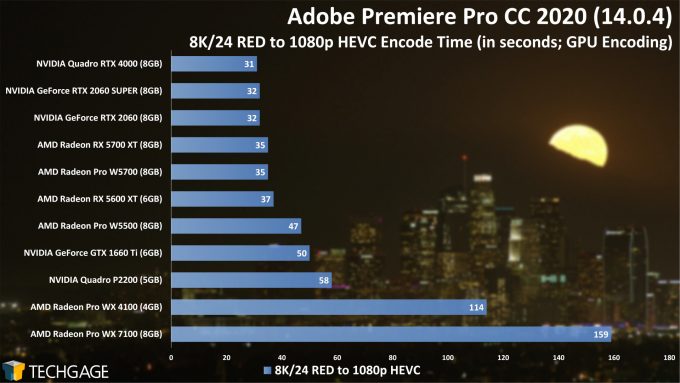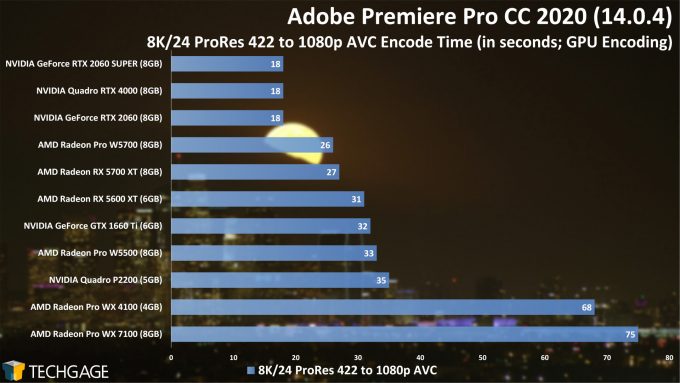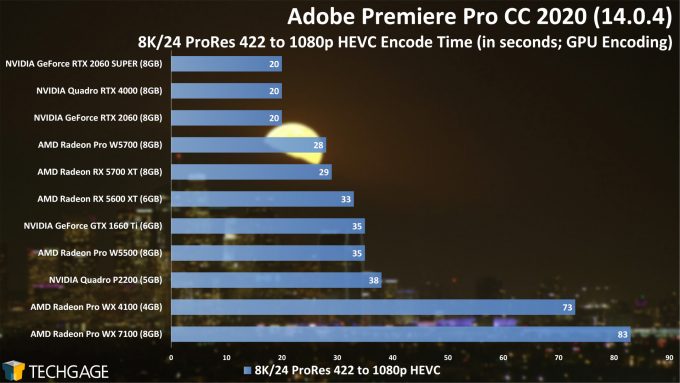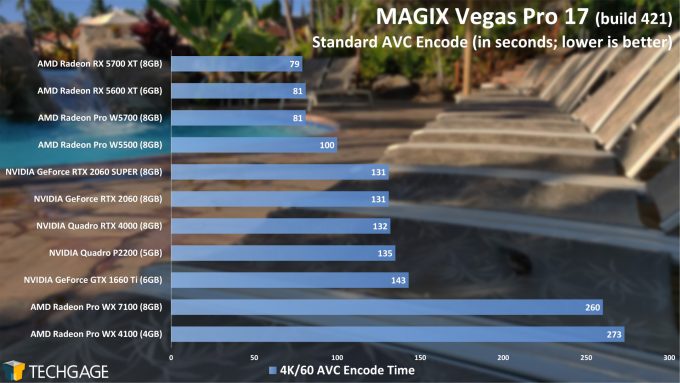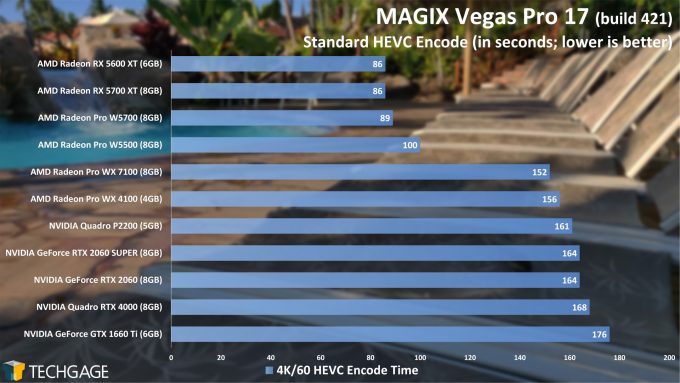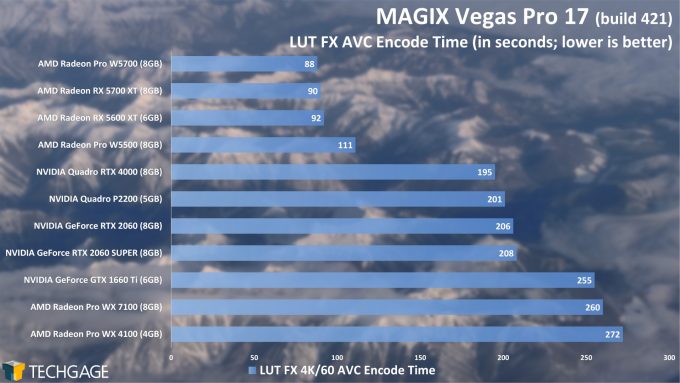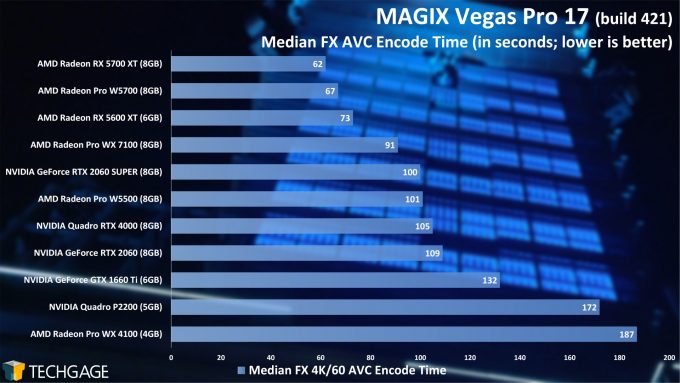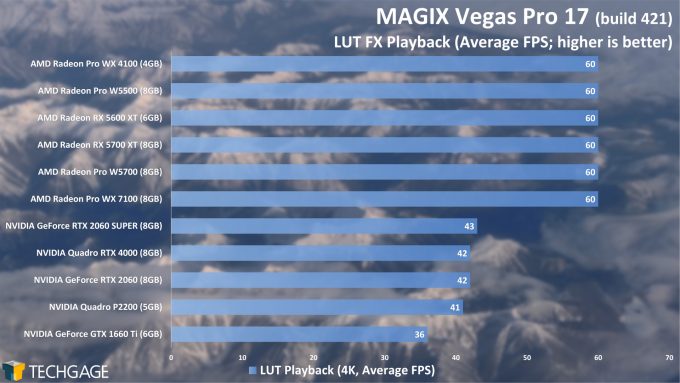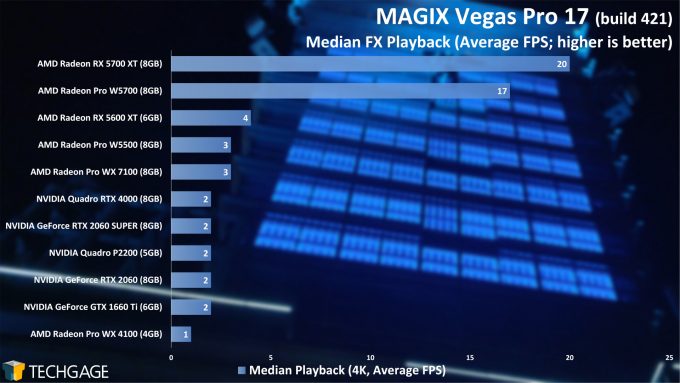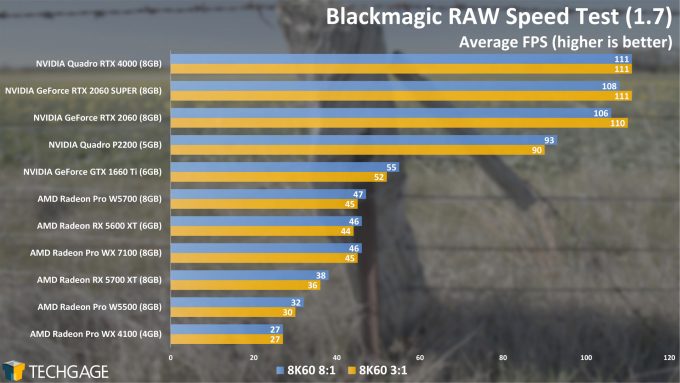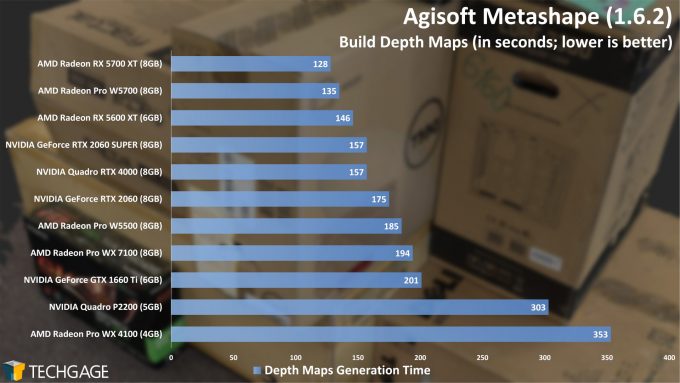- Qualcomm Launches Snapdragon 4 Gen 2 Mobile Platform
- AMD Launches Ryzen PRO 7000 Series Mobile & Desktop Platform
- Intel Launches Sleek Single-Slot Arc Pro A60 Workstation Graphics Card
- NVIDIA Announces Latest Ada Lovelace Additions: GeForce RTX 4060 Ti & RTX 4060
- Maxon Redshift With AMD Radeon GPU Rendering Support Now Available
Mid-range Pro Navi: AMD Radeon Pro W5500 Workstation Graphics Card Review

AMD released its Navi-based Radeon Pro W5500 a few months ago, and to say we’ve spent a lot of time battering it with tests would be an understatement. We’re taking a look at AMD’s latest $399 professional GPU with the help of many encoding, rendering, viewport, and gaming tasks.
Page 3 – Encoding: Adobe Premiere Pro, Vegas Pro, BRAW Speed Test & Agisoft Metashape
Adobe Premiere Pro CC 2020
It’s interesting just how often two projects can show starkly different performance results in the same application. Our 1080p project encoded faster on NVIDIA GPUs, to the extent that even the lowest-end NVIDIA card beat out the highest-end AMD. In the 4K test, which uses entirely different assets (all 4K-sourced), most of the GPUs perform the same. That probably means we need a different 4K project to see better scaling, but at least we still have 4K and 8K codec tests to look at:
The above results once again highlight the fact that it’s important to understand your workload, since even the codec choice can sway which graphics card comes out ahead. With AVC source, both AVC and HEVC encodes were faster on NVIDIA’s Quadro P2200, versus W5500, but AMD’s Radeon Pro redeemed itself in both the RED and ProRes transcodes.
MAGIX Vegas Pro 17
It’s clear from the start that AMD’s graphics cards have some strong optimization in Vegas, with the four high-end Radeons soaring straight to the top. In the HEVC test, even the older Polaris-based cards placed ahead of NVIDIA.
Let’s see how the addition of FX affects things:
With either the LUT or Median-infused projects, the AMD stack continues to perform extremely well. We’d draw the line at the older Polaris cards, though. With LUT use, the WX 7100 and 4100 both found themselves at the bottom of the pile, while only the 7100 managed to redeem itself in the Median test.
This really is the final nail in the coffin. No NVIDIA graphics card managed to hit 60 FPS with LUT in our testing, while all of the AMD cards did. As mentioned in our launch look at VP17, Quadro cards still require you to add the application as a profile in NVIDIA’s Control Panel in order to gain full acceleration.
With the Median playback test, it’s proven that if you want the best possible performance with grueling effects use, AMD’s 5700 series is hard to beat. We’ll make sure the RX 590 and Radeon VII are tested for an upcoming look of general ProViz performance.
Blackmagic RAW Speed Test
AMD’s Radeon laid the smack down in Vegas Pro, and NVIDIA has struck back hard with this BRAW test. We’re still planning to introduce real-world DaVinci Resolve tests in the future, but for now, this BRAW speed test tackles a basic, but important performance area.
Agisoft Metashape
While depths maps generation is just one part of the photogrammetry recipe, the process is one of the more intensive, and overall, it seems to favor Radeons in Metashape. Both of AMD’s 5700-series cards place at the top, and the RX 5600 XT gaming card places ahead of every other test NVIDIA card – even the Quadro RTX 4000, which is similar in spec to a GeForce RTX 2070.
In the match-up of Quadro P2200 and Radeon Pro W5500, AMD sure does make a strong statement here.
Support our efforts! With ad revenue at an all-time low for written websites, we're relying more than ever on reader support to help us continue putting so much effort into this type of content. You can support us by becoming a Patron, or by using our Amazon shopping affiliate links listed through our articles. Thanks for your support!




